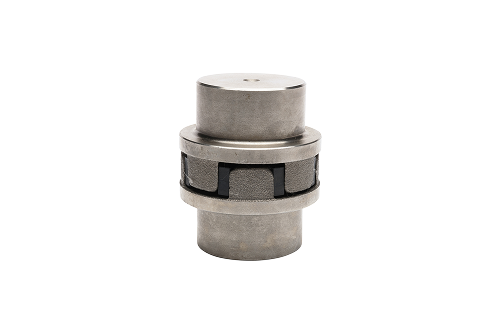In industrial machinery and power transmission systems, a coupling is a device used to connect two rotating shafts, allowing power to be transmitted from one shaft to another. Couplings are essential for ensuring that mechanical systems operate smoothly, even when the shafts are not perfectly aligned. But what exactly is a coupling, how does it work, and why is it so important in industrial applications?
Understanding Couplings: The Basics
A coupling is a mechanical component that connects two shafts, allowing them to rotate together and transmit torque. It can be used in systems where two components need to move in tandem, even if there is some degree of misalignment between the shafts. By connecting the shafts, the coupling ensures that energy is transferred efficiently from one part of a machine to another.
Couplings can be made from a variety of materials, including steel, aluminum, rubber, and plastic, depending on the application and the level of flexibility, durability, and torque needed.
How Do Couplings Work?
Couplings work by joining two shafts together in such a way that they rotate in sync, transferring rotational energy from one shaft to the other. Depending on the type of coupling, they may also compensate for slight misalignments between the shafts. This is crucial in systems where perfect alignment is difficult or impossible, such as in industrial machinery, conveyors, or pumps.
When one shaft rotates, the coupling ensures that the second shaft moves in the same direction and at the same speed. Some couplings also help to dampen vibrations, reducing stress on the connected machinery and prolonging its lifespan.
Why Are Couplings Important?
Couplings play a critical role in the smooth operation of many mechanical systems:
• Torque Transmission: Couplings allow the transfer of power (torque) from one shaft to another, ensuring machines run efficiently.
• Misalignment Compensation: Many couplings are designed to accommodate slight misalignments between the shafts, reducing the risk of damage to the system.
• Shock Absorption and Vibration Damping: Some couplings help absorb shocks and vibrations, which can protect sensitive components from wear and tear.
• Preventing Damage: Couplings can protect equipment from damage caused by overloads or sudden movements by allowing for flexibility and cushioning.
Types of Couplings
There are several types of couplings, each designed for specific applications. Here are some of the most common types:
1. Rigid Couplings: Rigid couplings are designed to connect shafts that are perfectly aligned. These couplings do not allow for any movement or flexibility and are typically used when precise alignment is ensured. Rigid couplings are commonly used in applications where the shafts are well aligned and there is no need for compensation.
2. Flexible Couplings: Flexible couplings can absorb slight misalignments between shafts, allowing them to be used in systems where perfect alignment is difficult to achieve. These couplings are often used in applications like pumps, motors, and compressors, where some misalignment or movement between shafts is inevitable.
3. Fluid Couplings: Fluid couplings use hydraulic fluid to transmit power from one shaft to another. They are particularly useful in systems where a smooth start is needed, such as in conveyor systems and heavy machinery. Fluid couplings help reduce shock loads and protect the equipment from sudden changes in speed.
4. Universal Joints (U-Joints): Universal joints are used to transmit power between shafts that are not in line with each other. These couplings are commonly found in vehicles, such as cars and trucks, where the drive shaft must connect the engine to the wheels at an angle.
5. Oldham Couplings: Oldham couplings are designed to accommodate angular misalignment between shafts while providing a smooth power transfer. They are often used in precision applications, such as in robotics or machine tools.
6. Elastomeric Couplings: These couplings use an elastomer (a type of flexible material) to transmit power. They are commonly used in applications where flexibility and shock absorption are needed, like in electric motors and small pumps.
Applications of Couplings
Couplings are used across various industries and applications, including:
• Industrial Machinery: In manufacturing plants, couplings are used in conveyors, pumps, compressors, and other equipment to transmit power between motors and other components.
• Automotive: Universal joints and other types of couplings are used in vehicles to transfer power from the engine to the wheels.
• Pumps and Fans: Flexible couplings are commonly used in pumps and fans to accommodate misalignment and protect sensitive components.
• Agricultural Machinery: Couplings are used in farming equipment, such as tractors and harvesters, to connect various rotating parts and ensure smooth operation.
Maintaining Couplings
To ensure your coupling performs efficiently and lasts longer, regular maintenance is essential:
• Lubrication: Many couplings, especially flexible and fluid couplings, require regular lubrication to reduce friction and prevent wear.
• Alignment Checks: Misalignment can lead to premature wear, so it’s important to regularly check the alignment of the shafts and couplings.
• Inspection for Wear: Over time, couplings can wear out. Look for signs of excessive play, cracks, or material degradation, and replace the coupling as necessary.
At RR Fisher, we offer a wide range of high-quality couplings designed to suit your industrial applications. Whether you need a rigid, flexible, or fluid coupling, our team can help you find the right solution to optimize your machinery and ensure efficient power transmission.
What is a Coupling?

